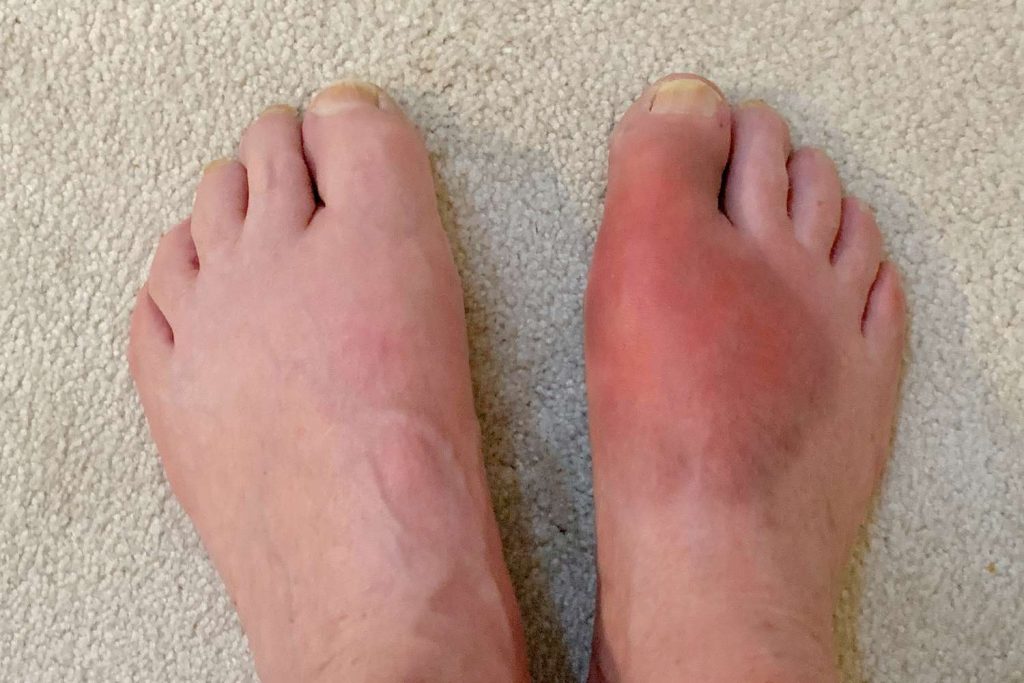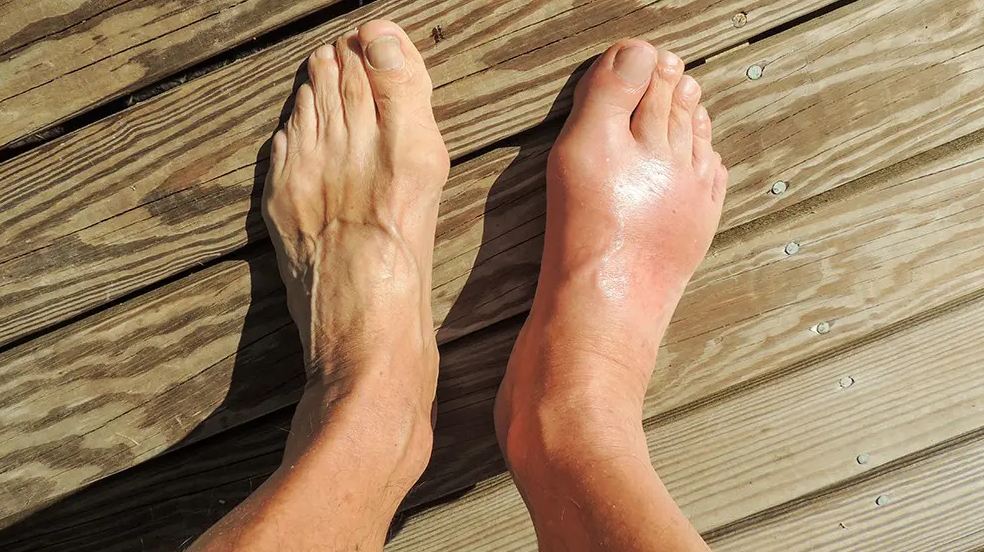Once thought to be the “disease of kings,” gout is now recognized as a widespread condition that can affect anyone, regardless of status. It occurs when uric acid builds up in the blood, forming sharp crystals in the joints. This leads to inflammation, swelling, and severe pain that can make even simple movements unbearable.
Stages of the Disease
Gout develops gradually in four distinct phases. The first, asymptomatic hyperuricemia, shows no outward signs but is marked by elevated uric acid levels. The second, acute gouty arthritis, brings sudden and intense joint pain—often striking at night. The inter-critical stage follows, a period of calm between attacks, and finally, chronic tophaceous gout, the most advanced phase, where hard crystal deposits called tophi appear, potentially causing long-term joint damage.

Recognizing the Symptoms
Gout attacks typically begin suddenly, often in the big toe, though any joint can be affected—ankles, knees, wrists, or fingers. The pain peaks within the first 12 hours, leaving joints red, swollen, and tender to the touch. Even after the worst pain passes, stiffness and discomfort can linger for days or weeks. Without proper treatment, attacks become more frequent and more severe, eventually restricting joint movement and leading to permanent damage.
Who Is Most at Risk
Gout is more than four times more common in men than women, especially between ages 30 and 50. Genetics, diet, alcohol consumption, dehydration, and certain medications can all raise uric acid levels. Obesity, high blood pressure, and kidney disease also increase susceptibility. While women are generally protected by estrogen before menopause, their risk rises sharply afterward.
Natural Ways to Reverse Gout
- Although medication can help manage gout, lifestyle changes play a major role in reducing symptoms and preventing future attacks.
- Stay Hydrated: Drinking plenty of water helps flush excess uric acid through the kidneys.
- Limit Purine-Rich Foods: Red meats, organ meats, and seafood like anchovies and sardines can elevate uric acid.
- Reduce Alcohol and Sugar: Beer and sugary drinks are known triggers for gout flare-ups.
- Eat Anti-Inflammatory Foods: Cherries, berries, ginger, turmeric, and leafy greens help reduce inflammation naturally.
- Maintain a Healthy Weight: Even modest weight loss can significantly decrease gout risk.
The Role of Exercise and Stress Management
Moderate exercise supports circulation and helps manage weight, but overexertion should be avoided during flare-ups. Stress is another major trigger, as it raises cortisol levels and can worsen inflammation. Relaxation techniques such as deep breathing, meditation, or yoga may help control stress and reduce attack frequency.

Long-Term Management
Managing gout successfully means maintaining consistent habits rather than seeking a quick fix. Regular checkups, blood tests for uric acid, and medical guidance are essential. Medications like allopurinol or febuxostat can help reduce uric acid production, but they work best alongside a balanced diet and healthy routine.
Conclusion
Gout may be painful, but it’s also manageable—and even reversible for many people. Through awareness, discipline, and lifestyle adjustments, sufferers can regain mobility and prevent further damage. The key lies in recognizing early symptoms, acting promptly, and supporting the body naturally with healthy habits that restore balance and joint health.

















